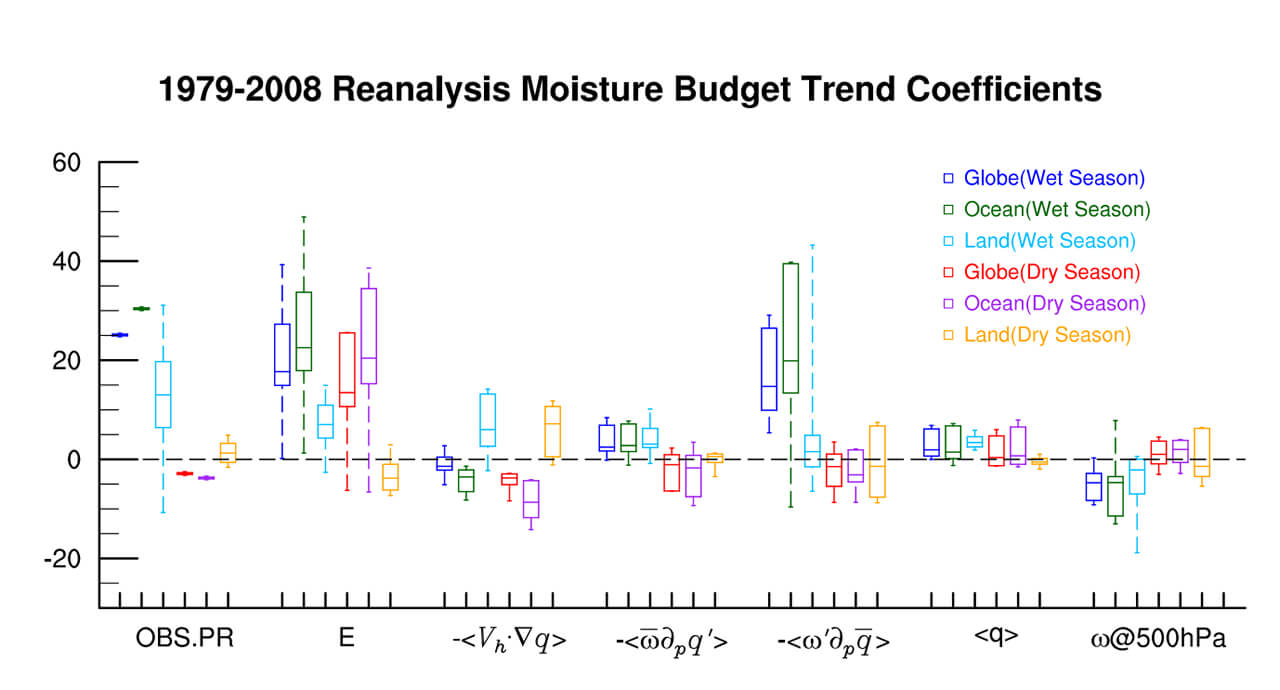Research-interests 2
Precipitation changes under global warming
The enhancement of moisture convergence associated with thermodynamic (water vapor) and dynamic (vertical velocity, circulation) components can lead to changes in the intensity and frequency of heavy rainfall. In this study, an atmospheric vertically integrated water budget analysis using multiple reanalysis datasets demonstrates that dynamic changes (vertical velocity) play a significant role in the seasonal precipitation changes from 1979 to 2005.
The thermodynamic component has nearly the same magnitude in the seasonal precipitation changes in both the CMIP5 models and reanalysis data from 1979 to 2005; however, the dynamic component (related to the tendency of ω and water vapor climatology) is substantially underestimated in the CMIP5 models compared to the reanalysis products. Vertical profiles of the tendency in potential temperature indicate a more stable atmosphere in the CMIP5 models compared to that in the reanalysis datasets, causing weakened vertical motions.
This difference in stability might be related to the shortcomings in contemporary climate models that lead to a stronger warming tendency in the tropical middle and upper troposphere. The findings provide some guidelines for the climate model parameterization improvements and future changes in seasonal precipitation under climate changes.

Lan et al., 2019
Impact of land-use changes on the local and regional climates
Precipitation changes under global warming
Impact of climate changes on the global water resources
Exploration of the eco-hydro-climatic system of mountain cloud-fog forests (MCFs)

